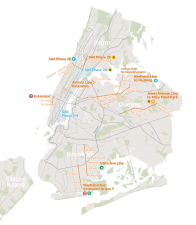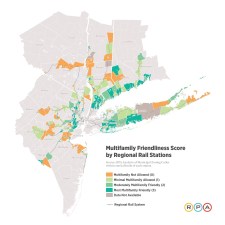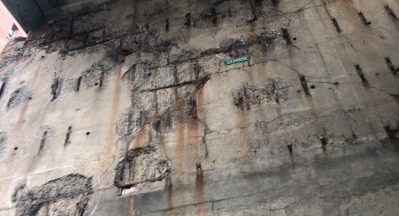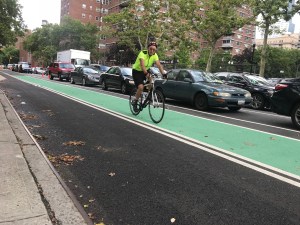For Safer, Greener Streets, Cities Must Speed Up and Fund Infrastructure: Report

The city must reform and accelerate the way it builds infrastructure if it has any hope of transforming the streetscape into true public space filled with protected bike lanes, bus lanes, and wider sidewalks, according to a new report by the Regional Plan Association.
Changes to the city’s streetscape often get bogged down by delays. But if the city streamlined the process, it would save $1 billion a year, according to the RPA.
The RPA report, “Building Better Streets, Improving Capital Street Infrastructure Delivery for a Re-envisioned Right-of-Way” offers a new analysis into why infrastructure in New York City costs more than in other cities and countries around the world. It’s no surprise that land and labor costs here are among the highest in the world — just look at the Second Avenue Subway extension, or the cost of a bathroom in a city park.
“In New York City, we try to pack so much infrastructure into this very confined space,” said Christopher Jones, a senior research fellow at RPA and one of the co-authors of the report. “If we want the type of streets that everybody thinks we need with bike lanes and green infrastructure and broadband that reaches everyone, we have to be able to construct this type of infrastructure much faster and much more cost effectively than we do now.”
NEW: Part of @NYCMayor‘s & @NYCPlanning‘s City of Yes initiative is speeding up the capital infrastructure delivery process. Our new report, “Building Better Streets,” explores ways to improve the process to create a better right-of-way in NYC. ?https://t.co/HaYF2fqw16
— Regional Plan (@RegionalPlan) March 21, 2023
https://platform.twitter.com/widgets.js
There are three main factors that contribute to the problem of exorbitant costs and delays. One is that both the private and public sector each own and operate their own sets of wires, tubes, and conduits, aka the “spaghetti” of infrastructure on top of and below the surface of the street. This makes it difficult to distinguish and coordinate who is in charge of what.

The second factor is that the city has no comprehensive dataset for what is beneath the right-of-way. It’s basically a clusterf–k of wires and pipes, said Jones.
“We don’t know exactly where all the pipes and cables are underneath the street,” he said.
As a result, projects are often delayed while the complications are worked out.
“In addition, outdated systems compound slow procurement and payment processes, which are critical to efficient project delivery,” the report said.
And the third factor is that the city lacks holistic planning.
The result is that a capital project — meaning anything over $25 million — takes an average of nine years to complete, from the start of design to the end of construction. And the longer a project takes, the more it costs — at least 5 percent more per each year, the report says.
In order to transform what’s currently 77 percent of the city streetscape dominated by car usage into the type of green infrastructure the city needs, the whole process must be reformed.
“New York City needs to greatly increase investments in pedestrian, bike, and green infrastructure, and to transition from a car-oriented right-of-way that currently devotes 77 percent of surface area to auto-related uses to one that better serves pedestrians, micromobility, and multi-modal travel. To achieve this transformation, NYC needs to change the way that infrastructure is built, maintained, and governed,” the report says.
To do that, the RPA offers a slate of eight recommendations the city should implement, building off of the ones produced earlier this year by Mayor Adams’s own Capital Process Reform Task Force.
Nine of the city’s task force recommendations require support from Albany, like allowing the city to use the streamlined process known as design-build, or even something as simple as electronic bidding. Now, all paperwork must be submitted in writing — an archaic process that inherently slows things down, said Jones.
“The city still can’t put out bids electronically, everything has to be done by paper,” he said.
The RPA’s eight recommendations include calling on the state legislature to enact the city’s nine reforms that require Albany approval; developing one capital project tracker to more easily keep track of what’s in the pipeline; creating a three-dimensional map of all of the underground infrastructure; having the mayor’s new Director of the Public Realm Ya-Ting Liu “synthesize interdepartmental street planning efforts and promote multidimensional infrastructure;” and empowering the Department of Transportation to implement capital projects like protected bike lanes in the right-of-way.
If those reforms are adopted, the city could save more than $1 billion a year and more quickly build out the type of green infrastructure the city desperately needs, said Jones.
“There’s a window of opportunity for making street infrastructure less expensive and much faster,” said Jones.




